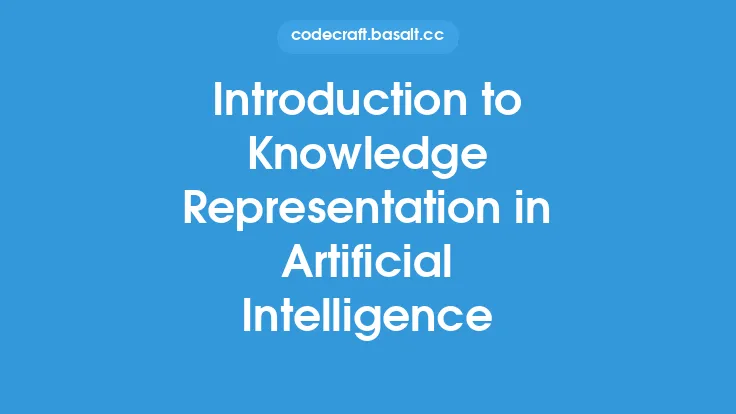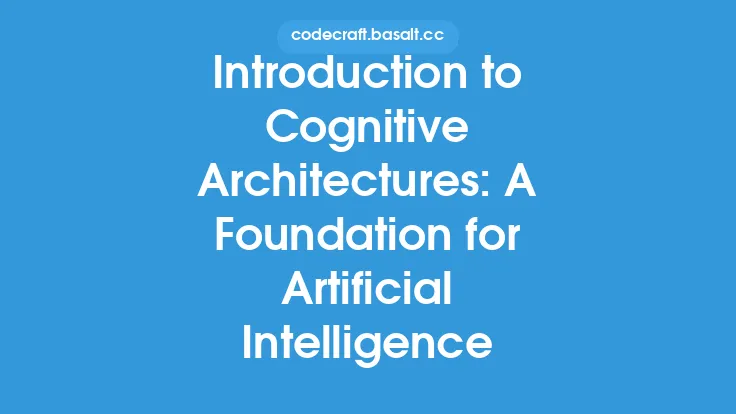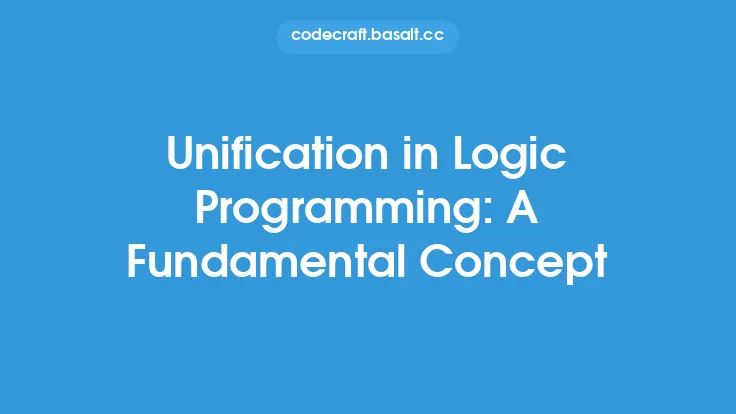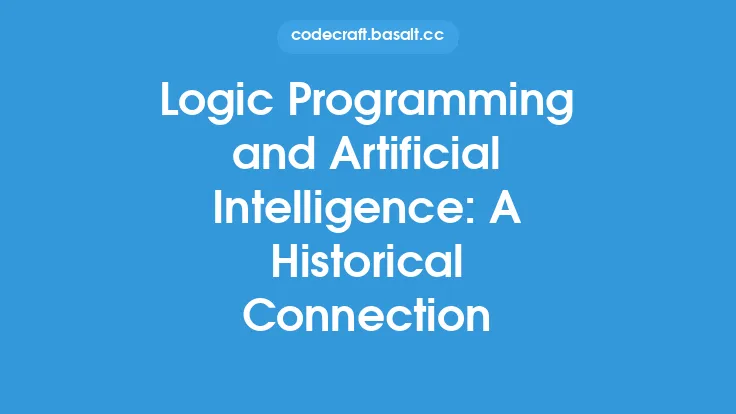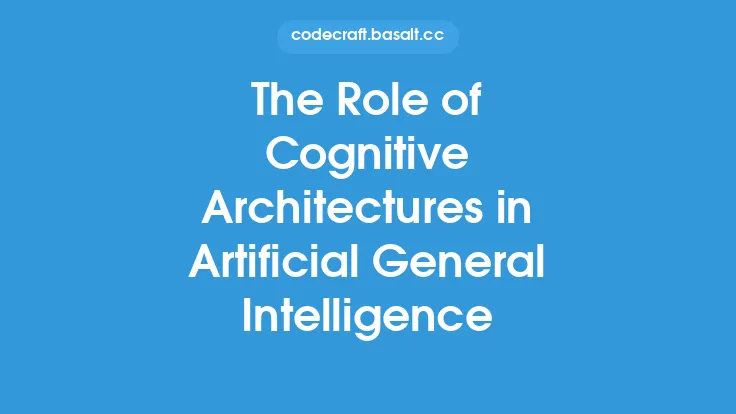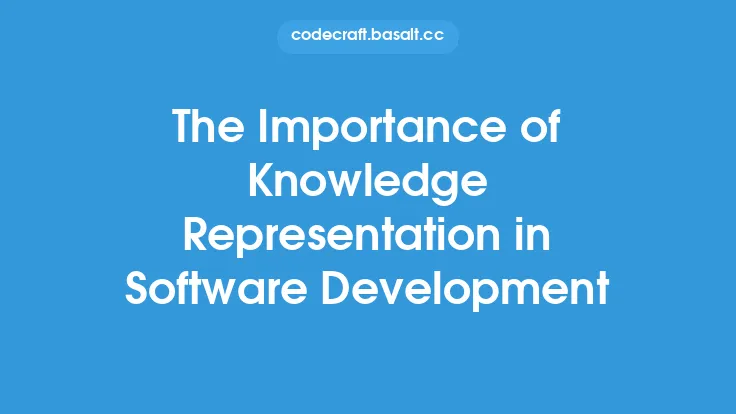Knowledge graphs are a crucial concept in artificial intelligence, enabling machines to understand and represent complex relationships between entities, concepts, and ideas. At their core, knowledge graphs are graphical representations of knowledge, where nodes or vertices represent entities, and edges represent the relationships between them. This fundamental concept has far-reaching implications for various applications, including natural language processing, question answering, and decision-making systems.
History and Evolution
The concept of knowledge graphs has its roots in the early days of artificial intelligence, when researchers began exploring ways to represent knowledge in a machine-readable format. The term "knowledge graph" was first coined in the 1980s, but it wasn't until the 2010s that the concept gained significant attention, particularly with the introduction of Google's Knowledge Graph in 2012. Since then, knowledge graphs have become a cornerstone of artificial intelligence research, with applications in various domains, including healthcare, finance, and education.
Architecture and Components
A knowledge graph typically consists of several key components, including entities, relationships, and attributes. Entities are the nodes or vertices in the graph, representing objects, concepts, or ideas. Relationships are the edges that connect entities, describing the interactions or associations between them. Attributes are the properties or characteristics of entities, providing additional context and information. The architecture of a knowledge graph can be categorized into two main types: centralized and decentralized. Centralized knowledge graphs are typically stored in a single repository, while decentralized knowledge graphs are distributed across multiple nodes or systems.
Knowledge Graph Construction
Constructing a knowledge graph involves several steps, including data collection, entity recognition, relationship extraction, and graph construction. Data collection involves gathering relevant data from various sources, such as text documents, databases, or APIs. Entity recognition involves identifying and extracting entities from the collected data, using techniques such as named entity recognition (NER) or part-of-speech tagging. Relationship extraction involves identifying and extracting relationships between entities, using techniques such as dependency parsing or semantic role labeling. Graph construction involves creating the knowledge graph by connecting entities and relationships, using algorithms such as graph traversal or community detection.
Applications and Use Cases
Knowledge graphs have numerous applications and use cases, including question answering, natural language processing, and decision-making systems. Question answering systems, such as Siri or Google Assistant, rely on knowledge graphs to provide accurate and relevant answers to user queries. Natural language processing applications, such as text summarization or sentiment analysis, use knowledge graphs to understand the context and relationships between entities. Decision-making systems, such as recommender systems or expert systems, use knowledge graphs to provide informed and personalized recommendations.
Challenges and Limitations
Despite the numerous benefits and applications of knowledge graphs, there are several challenges and limitations to their construction and use. One of the primary challenges is data quality, as knowledge graphs rely on high-quality and accurate data to provide meaningful insights. Another challenge is scalability, as large-scale knowledge graphs can be computationally expensive to construct and query. Additionally, knowledge graphs can suffer from issues such as data sparsity, where certain entities or relationships are underrepresented, and data noise, where incorrect or irrelevant data is included.
Future Directions and Research
Future research directions for knowledge graphs include improving data quality and scalability, as well as exploring new applications and use cases. One area of research is the use of machine learning and deep learning techniques to improve knowledge graph construction and querying. Another area of research is the integration of knowledge graphs with other artificial intelligence technologies, such as computer vision or robotics. Additionally, there is a growing interest in the use of knowledge graphs for explainable AI, where knowledge graphs can provide transparent and interpretable explanations for AI decision-making.
Real-World Examples and Case Studies
Several real-world examples and case studies demonstrate the effectiveness and potential of knowledge graphs. For example, Google's Knowledge Graph has been used to improve search results and provide more accurate answers to user queries. IBM's Watson system uses a knowledge graph to provide personalized recommendations and answers to user questions. In the healthcare domain, knowledge graphs have been used to represent medical knowledge and provide decision support for clinicians. In the finance domain, knowledge graphs have been used to represent financial data and provide risk analysis and portfolio management.
Conclusion and Summary
In conclusion, knowledge graphs are a fundamental concept in artificial intelligence, enabling machines to understand and represent complex relationships between entities, concepts, and ideas. With their ability to provide accurate and relevant answers, improve natural language processing, and support decision-making systems, knowledge graphs have numerous applications and use cases. While there are challenges and limitations to their construction and use, future research directions and real-world examples demonstrate the potential and effectiveness of knowledge graphs. As artificial intelligence continues to evolve and improve, knowledge graphs will play an increasingly important role in enabling machines to understand and interact with the world around them.
